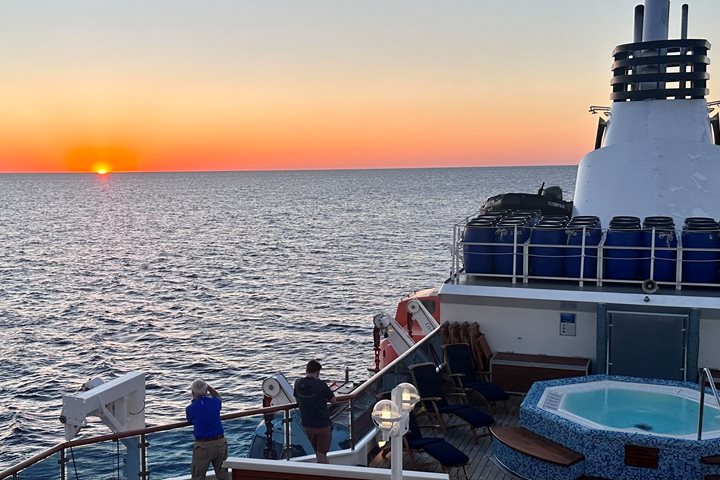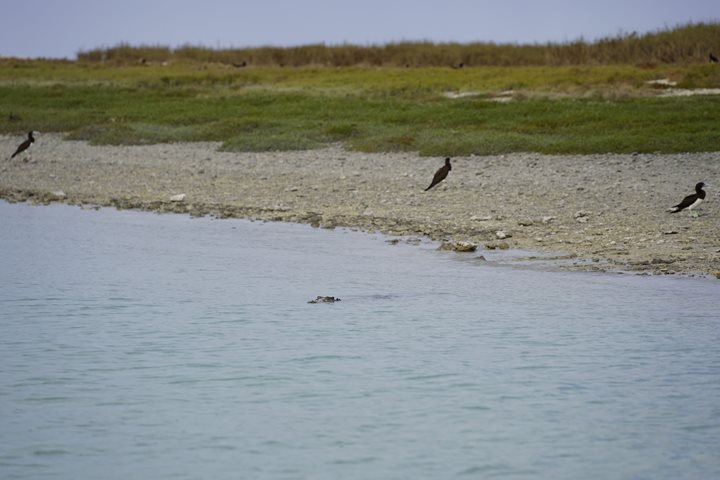Arriving at dawn to weigh anchor in Talbot bay, we were welcomed with yet another of the Kimberley’s spectacular sunrises, watching on as it painted light across the ancient sandstone cliffs.
Talbot Bay is located within the King Leopold Geologic Zone, where approximately 1,800 million years ago a separate continent (the Kimberley Kraton) collided with the Australian land mass. This collision caused massive heating along the boundaries of contact and in effect, the Kimberley land mass became welded to Australia, creating the Kimberly region of Australia. Here in Talbot bay, the buckling and folding of the sandstone that has occurred from this powerful geologic event was extremely evident.
This morning, an air of excitement was obvious around breakfast time as we chatted about the adventures that lay ahead. As tides can rise or fall up to 11 metres in a 6 hour period here, we set out on the first Zodiac expedition based around the slack of the tide. This allowed us to traverse the narrow gaps in safety, and to then explore the lagoons beyond. While cruising the lagoons scouring the landscape for charismatic fauna such as rock wallabies and estuarine crocodiles, numerous species of salt-excreting mangroves hugged the waters edge, while tussock grasses and spinifex sprawled across the jagged hillside.
Later on in the morning, the tide was rising rapidly and the horizontal falls began filling up the lagoon beyond. During peak flow on a spring tide 1 million litres of water pass between the sandstone walls every second. It was an awe inspiring sight for us from the Zodiacs, and an adrenaline pumping affair for those who had opted to on the 900 horse power fast-boats that provided the chance to pass through the white water rapids of the gap at full throttle.
After all of the morning’s exhilaration, we returned to the National Geographic Orion for lunch and were greeted with the presence of two large tawny nurse sharks, who glided effortlessly through the current behind the ship. Before long we were ready to set off again, this time around the affectionately named Slug Island, due to its slug-like topography. Coincidentally, slug-like chitons are found everywhere along its intertidal zone. We cruised these waters in the afternoon spotting brahminy kites, white bellied sea eagles, herons and the world’s fastest animal, the peregrine Falcon. The warm afternoon light provided us with perfect conditions to photograph the unique geology, flora and fauna of this region only before heading back to the ship to regroup and recap on another memorable experience along the Kimberley coast.







